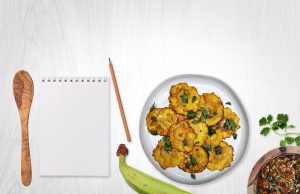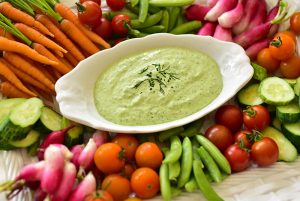By: Sara Liberow
Meet our columnist! Sara, the foodie behind @thymelyeats, originally hails from Colombia, South America. Aside from her bi-linguistic prowess, she combines her love for travel, healthy eating, and hospitality to create soulful and delicious foods for her family, friends, and Instagram followers. She loves cooking from scratch, chopping fresh herbs, watching her baby eat, collecting spices from around the world, and making food look as beautiful as it tastes.
A Colombian Chanukah
I love to talk about Colombian cuisine, but I rarely cook the typical foods I grew up on. Not because I don’t love them (I do!) but because they tend to lean towards starchy, cheesy, and fried, and my year-round cooking style is much cleaner and healthier. But Chanukah is the time of year when the aroma of oil frying, and a satisfying cheese pull are all I want. These Colombian recipes accomplish exactly that for me (that, plus a euphoric dose of childhood nostalgia). As for my guests, they love a good variation of a latkes!
I challenge you to try something new this year: There are eight nights of Chanukah, and plenty of room on the menu for both traditional Chanukah foods and all of the fun variations!

Patacones
The Colombian Latke
(makes approximately 12)
Sometimes referred to as “tostones”, these plantain fritters are popular all-over Latin America. Just like potato latkes, they’re delicious all on their own, or can be jazzed up with all kinds of toppings (think labneh, avocado crema, jalapeno aioli, or even pulled beef and steak slices). Patacones are twice fried, which makes them satisfyingly crunchy, and very much in the Chanukah theme. If you’re on the fence about making these, no, patacones don’t taste like bananas, and they don’t require peeling and grating.
You can find plantains at any bodega or chain supermarket- just be sure to look for the green unripe ones for this recipe.
Ingredients:
Deditos De Queso
The Colombian Mozzarella Sticks

Once you have this version, I promise, you will not want to go back to the breadcrumb-covered mozzarella sticks. These deditos (or “fingers” in Spanish), are wrapped in a flaky, buttery dough. They take a bit of practice, skill and getting the oil temp just right, but it’s worth the learning curve, trust me! This dough makes for a fantastic quiche crust, so go ahead and double the dough recipe if you’re feeling ambitious.
Ingredients:
Makes approximately 30
Scallion Salsa
You can make this salsa as spicy as you’d like – just add less hot sauce and add more ketchup. The consistency is somewhere between a sauce and a chunky relish, making it perfect for both dipping and topping.

½ purple onion, minced
5 scallions, chopped small
½ tbsp. white vinegar
Pinch of sugar
Pinch of salt
½ cup ketchup
2 tbsp. hot sauce
⅓ cup chopped cilantro
Green Goodness Labneh

Labneh is easy to throw together with ingredients that you usually have around. All you need is plain, whole milk yogurt, salt, and a cheesecloth (and a few hours’ notice, as this needs time to strain). You can serve it as is, or with a drizzle of good olive oil and zahtar. Here, I have a little fun with it and add even more pzazz. This is a fantastic topper for the patacones, but also delicious with breadsticks, crackers, or as a dip on a crudité platter.
Ingredients
32 oz. whole milk or plain Greek yogurt
1tsp. salt
1 lemon, peeled, deseeded, and segmented (Do this over a bowl so that you can save the lemon juices.)
A handful of parsley and/or cilantro, chopped (You can also use the frozen cubes as a shortcut.)
1 clove of garlic, crushed
You must be logged in to post a comment.